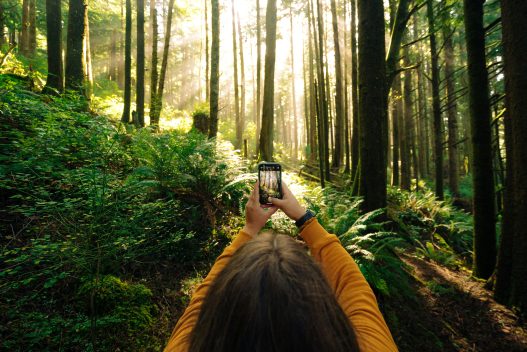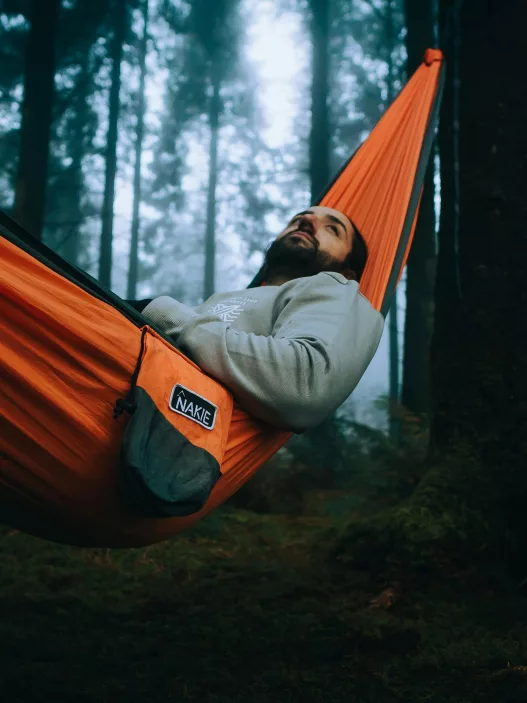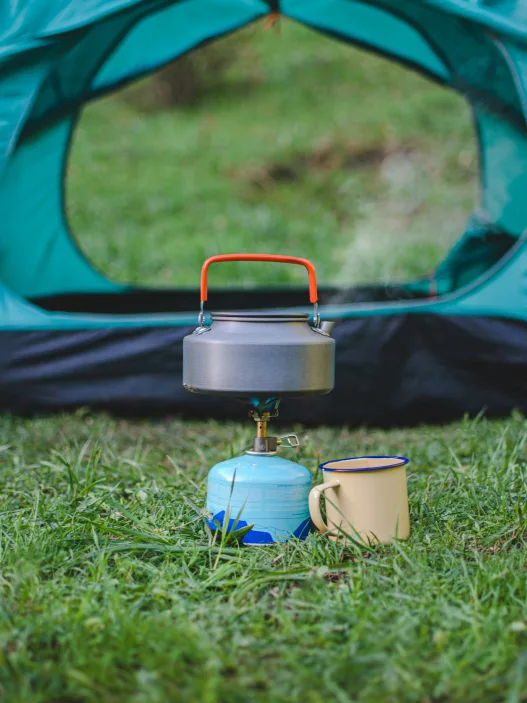Camping offers a unique opportunity to connect with nature, but it often comes with the challenge of staying powered up in remote locations. Portable power sources have become essential for campers who wish to charge devices, run lights, or power appliances without compromising the outdoor experience. With advancements in technology, these power sources range from compact power banks to large portable solar generators, catering to various camping styles and needs.
When selecting a portable power source, it’s crucial to consider factors such as capacity, weight, size, and charging options. The capacity, measured in watt-hours, determines how long your devices can run. Additionally, portability plays a significant role, as heavier models may not be ideal for hiking trips. It’s also important to look at the charging options available, such as solar capabilities or traditional power input, which affect usability during extended outings.
After extensive research into various models and user experiences, we have identified the top five portable power sources that provide reliable performance for camping trips. Each of these options balances power and portability, ensuring campers can enjoy their time outdoors without the worry of dead batteries.
Top 5 Portable Power Sources for Camping
We’ve compiled a selection of the best portable power sources for camping to ensure you have reliable energy on your outdoor adventures. Each product offers unique features designed to meet varying needs, from charging devices to powering larger equipment. Explore our top picks to find the perfect power source for your next trip.
Jackery Explorer 300
The Jackery Explorer 300 is a reliable power source that we found essential for our camping adventures.
Pros
- Quick recharging options via wall outlet or solar.
- Lightweight and portable design for easy transport.
- Safe power delivery with multiple charging ports.
Cons
- Limited by its total power capacity.
- Slightly higher price point compared to smaller models.
- No built-in handle for extended carries.
After using the Jackery Explorer 300 during our recent trip, we were impressed with how quickly it recharged. It took only about two hours to get it back up to 80% capacity using the wall outlet and USB-C simultaneously. This level of efficiency is a game-changer, especially when you’re out in the wild and want a reliable source of power. We also appreciated its compatibility with the Jackery SolarSaga 100 solar panel, which allows us to harness sunlight for recharging.
The weight of the power station is another advantage, coming in at just 7.1 pounds. We easily stashed it in our pack without feeling burdened. Its compact size makes it a fantastic addition to any camping gear. We managed to power multiple devices, including our phones and a small TV, while still having some juice left for essential gadgets.
While the Explorer 300 delivered great performance, we did note some limitations. The overall power capacity may hinder heavy-duty users who need to charge multiple high-wattage devices simultaneously. It’s also priced higher than some smaller alternatives, which might give budget-conscious campers a pause for thought. However, for what it offers in terms of safety and efficiency, the investment feels well-justified.
BailiBatt Portable Power Station
This compact power station is a reliable companion for camping trips and can efficiently handle a range of devices.
Pros
- Lightweight design at just 4.6 lbs, making it easy to carry.
- Dual pure sine wave AC outlets provide stable power for sensitive electronics.
- Good battery longevity, supporting over 1500 charge cycles for extended use.
Cons
- Limited output at 300W may not support larger appliances.
- Charging time can vary based on usage and device requirements.
- Some users may find the interface a bit basic.
We’ve had a fantastic experience with the BailiBatt Portable Power Station. Its lightweight design makes it incredibly easy to transport, which is a must for any outdoor adventure. This power station packs a surprising punch for its size, allowing us to charge multiple devices like phones and laptops simultaneously without running into issues.
The dual pure sine wave AC outlets are a standout feature. They ensure our sensitive equipment is safe from power surges while we enjoy the great outdoors. We ran a mini-fridge and fully charged several electronics throughout the weekend, and the power station handled everything efficiently.
It’s worth noting that while the 300W output is great for smaller devices, it does have limitations. We found it necessary to manage our power use carefully, especially when considering higher wattage appliances. Overall, the BailiBatt has been a dependable option for our camping needs, particularly for those requiring a portable and effective power source.
Apowking Portable Power Station Bank
This portable power station is a reliable choice for camping enthusiasts looking for a compact power source.
Pros
- Lightweight and easy to transport.
- Multiple charging options, including solar power.
- Built-in emergency lights for added safety.
Cons
- Charging speed can vary significantly with solar.
- Limited to 100W continuous output.
- Some users reported issue with battery longevity.
We recently tested the Apowking Portable Power Station during a weekend camping trip, and it truly impressed us with its size and capabilities. The compact design made it easy to carry, and we found the 146Wh capacity to be more than sufficient for charging phones, cameras, and even a small fan.
Setting it up was straightforward; we plugged it into a wall outlet, and it charged quickly. We also tried charging it via solar on a sunny day, which worked, but we noticed it took longer than we expected. For anyone who camps in areas with good sunlight, this feature could be a real plus. The dual LED lights were a handy addition for lighting up the tent during our night-time activities.
While using it, we were mindful of its 100W output limit. It worked well for our needs, but larger appliances wouldn’t be supported. Knowing its limitations is essential to ensure we maximise its use. The built-in safety features provided peace of mind during our trip, as we didn’t have to worry about overheating or short circuits. Overall, if you need a portable solution for your charging needs while out in nature, this power station is worth considering.
DaranEner Portable Power Station
This compact power station is a must-have for outdoor enthusiasts and anyone needing reliable backup power.
Pros
- Lightweight and portable design
- Fast charging capabilities
- Multiple ports for simultaneous device charging
Cons
- Limited peak wattage for some devices
- Performance can vary with heavier loads
- Slightly higher price point for smaller capacity
We recently took the DaranEner Portable Power Station on a camping trip, and it proved invaluable. At only 6.2 pounds, its portability was a significant advantage as we moved from site to site. The sheer power it offers—300W with a peak of 600W—was more than enough for our essential gadgets, including a small fan and a couple of charging phones.
Charging this unit was a breeze. We managed to get it fully recharged in just 1.5 hours with the wall outlet. It’s worth noting that we also used it during a brief power outage at home. The reliable performance left us feeling secure, knowing we had a backup power source when needed.
The eight ports allowed us to charge multiple devices at once without any noticeable drop in performance. The LED flashlight feature was handy during nighttime activities, providing us with needed visibility. Overall, we found the DaranEner power station a solid, dependable option for camping and emergency needs.
Powkey Portable Power Station
This compact power station is an excellent option for anyone seeking a reliable power supply for outdoor activities or off-grid needs.
Pros
- Remarkably lightweight and compact, making it easy to carry.
- Versatile charging options, including solar compatibility.
- High-speed charging allows for quick recharges.
Cons
- Battery life can diminish quickly under heavy use.
- Some users report issues with power output consistency.
- Not ideal for high-power devices that require sustained energy.
Recently, we tested the Powkey Portable Power Station during a weekend camping trip. Its size is impressive; it fits snugly in a backpack yet offers a substantial 24000mAh capacity. We easily charged our smartphones and even powered a small laptop without any issues. The ability to recharge via solar panels also adds versatility, though it’s important to note that the solar panel isn’t included.
The charging options are a fantastic feature. We appreciated the ability to recharge through an AC outlet at home or in the car, with a full charge achieved in just four hours. The LED display is a nice touch, allowing us to monitor the battery level easily.
That said, we noticed some drawbacks. The battery seemed to decrease in charge more rapidly than expected when powering higher-draw devices. While it’s excellent for smaller electronics, users planning to connect more demanding gear may want to be cautious. Some reports mentioned that the power output could be inconsistent under heavy load, which is worth considering when making a purchase.
Buying Guide
When selecting a portable power source for camping, there are several key features we should consider.
Battery Capacity
Look for a capacity that suits our needs. Measured in milliamp-hours (mAh) or watt-hours (Wh), higher values generally mean more power.
Portability
Weight and size matter for camping. We need a power source that is easy to carry but still meets our power requirements.
Output Ports
Check the number and types of outlets available. This can include USB, AC, or DC outlets. By identifying our devices, we can choose accordingly.
Recharge Time
Consider how quickly we can recharge the unit. Efficient charging methods like solar or quick charge capabilities can be beneficial.
Durability
Camping can be tough on gear. We should look for rugged, weather-resistant models to withstand the outdoor environment.
Price
Set a budget. Prices can vary widely based on features and capacity, so it’s essential to find a good balance between cost and functionality.
Quick Reference Table
| Feature | Importance |
|---|---|
| Battery Capacity | High capacity for longer use |
| Portability | Lightweight and compact design |
| Output Ports | Compatibility with our devices |
| Recharge Time | Quicker recharging options preferred |
| Durability | Must withstand outdoor conditions |
| Price | Find value within our budget |
By focusing on these features, we can make a well-informed choice for our camping adventures.
Frequently Asked Questions
We often encounter various inquiries regarding portable power sources for camping. Addressing these common questions can help clarify our choices and make informed decisions.
What are the best portable power stations for camping currently on the market?
Some top portable power stations for camping include models from EcoFlow, Jackery, and Anker. These brands offer reliable options with various capacities suited for different camping needs. It’s important to compare their features and reviews to identify the best fit for our requirements.
How can one determine the ideal power capacity needed in a portable power station for outdoor use?
To determine the ideal power capacity, we need to assess our devices’ wattage requirements. Start by adding up the wattage of all the equipment we plan to power during our trip. This calculation will guide us in choosing a portable power station with adequate capacity.
In what ways do higher-capacity power stations, such as 2000W models, differ from lower-capacity models, like the 1000W stations, for camping?
Higher-capacity power stations can power more devices simultaneously and for longer periods. They are ideal for larger groups or when using multiple high-wattage appliances. Lower-capacity models are more compact and suitable for basic needs, such as charging phones or running small lights.
What features should one look for when choosing a budget-friendly portable power station for camping?
When seeking a budget-friendly option, we should look for essential features like multiple output ports, a decent battery capacity, and weight. Consider models with efficient charging options and a solid build to withstand outdoor conditions without breaking the bank.
Which criteria are most crucial when comparing portable power stations from leading brands such as EcoFlow and Jackery?
Key criteria include battery capacity, output options, charging time, and weight. We should also examine customer feedback and warranty options. Comparing these elements helps us make a balanced choice between popular brands.
What are the main distinctions between power banks and portable power stations for outdoor activities?
Power banks are typically smaller and designed for charging devices like smartphones or tablets. In contrast, portable power stations have higher capacities and can support larger devices, including coolers and CPAP machines. This distinction makes them more versatile for camping and outdoor adventures.














